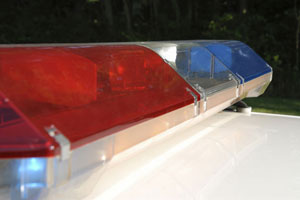A Hollister Police Department sergeant charged Jan. 25 with
driving under the influence had the charge dismissed recently by
Judge Steven Sanders and was convicted instead of reckless
driving
– carrying a penalty of probation for a year, a $480 fine and 40
hours of community service. Sgt. James Egan was involved in the
January accident that resulted in the original charge of driving
under the influence of alcohol or drugs.
HOLLISTER
A Hollister Police Department sergeant charged Jan. 25 with driving under the influence had the charge dismissed recently by Judge Steven Sanders and was convicted instead of reckless driving – carrying a penalty of probation for a year, a $480 fine and 40 hours of community service.
Sgt. James Egan was involved in the January accident that resulted in the original charge of driving under the influence of alcohol or drugs. Sanders dismissed the DUI charge Dec. 1.
“We offered him a plea in consideration of all the facts and details of the case,” said Deputy District Attorney Patrick Palacios, who declined to release Egan’s blood-alcohol content, the test for which occurred about two hours after the accident. “I can’t comment on what was in the police report.”
Drivers in California are legally considered drunk with a BAC of .08 percent or higher.
Defense attorney Greg LaForge told the Free Lance that prosecutors had little choice.
“He (Egan) called in the accident himself, and there was no way the D.A. could prove he was impaired,” LaForge said. “When they gave him field sobriety tests, he had already been treated at the emergency room and had medicine injected in him that would have made anyone fail.”
Egan’s accident resulted in a flat tire and his 2003 Chevrolet Silverado pickup truck became stuck in mud on the side of Highway 25. A San Benito County sheriff’s sergeant arrived and sent Egan to Hazel Hawkins Memorial Hospital as a precaution because of a recent surgery, according to a sheriff’s report.
At the hospital, Egan was hooked up to an I.V. and given pain medication. The California Highway Patrol, meanwhile, responded to the accident scene. A CHP officer then went to the hospital to check on Egan.
“Upon contact, I observed objective symptoms of alcohol intoxication and conducted a DUI evaluation on the driver,” the officer wrote in his report.
That evaluation included field sobriety tests and a blood test, according to the report, which does not provide a blood-alcohol content level.
The officer placed Egan under arrest for driving under the influence, but released him into the care of the hospital, the report stated.
A CHP officer at the local office in Gilroy also declined to provide the blood-alcohol content, and a court clerk told the Free Lance that the information was not available on records.
Palacios maintained that the plea bargain was justified based on the “facts and evidence.” He declined to provide details of the facts and evidence, but court documents indicate a motion for suppression filed by LaForge contending that “a nonconsensual blood draw must be supported by probable cause to result in a lawful arrest.”
The motion contends that the arresting officer did not go to the hospital due to a belief that a crime had been committed and that the blood test was, therefore, inadmissible.
The motion to suppress, in part, reads as follows:
“There are no facts whatsoever to warrant the taking of Sergeant Egan’s blood. He was in the emergency room being treated by emergency room staff, when, 42 minutes later, in walked a CHP officer who stated in his report, ‘I had decided to go to the hospital and let the driver (Sgt. Egan) know where his vehicle had been towed to and to tell him that he had been unable to locate his firearm.’ There was absolutely no probable cause for the officer to even be at the hospital, as referenced in his own report.”
LaForge contends it is a violation of Egan’s Fourth Amendment rights and constitutes unlawful search and seizure. LaForge also filed a lengthy motion, which responded to expected “retrograde extrapolation” of Egan’s BAC by the San Benito County District Attorney’s Office.
Retrograde extrapolation is a process by which scientists attempt to estimate a person’s BAC at a time before testing occurred. In this case, LaForge argued the prosecution would attempt to prove a certain state of impairment at the time of the accident.
LaForge’s motion cites many studies and cases where this practice has been deemed unreliable and ends by stating the practice is “voodoo science that is totally unreliable in a Court of Law.”
Egan must next appear in court on Dec. 16 to enroll in the county work service program. He will then appear Feb. 10 to prove that he has completed his 40 hours of community service.
Egan, District Attorney Candice Hooper and Hollister Police Chief Jeff Miller could not be reached immediately before publication.









